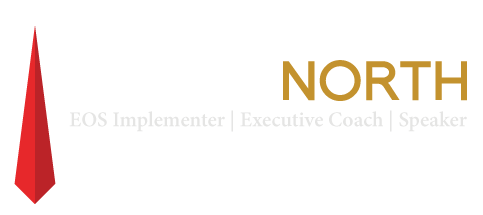An entrepreneur recently emailed me this: “I’m so exhausted!” I can’t count how many times I’ve heard that or something similar (“I’m overwhelmed” is also common) from entrepreneurial leaders over the past three decades. Entrepreneurial leaders often find themselves in a tornado of chaos.
Why does chaos develop?
When building a business and adding employees, things quickly become more complicated! If there isn’t a highly effective, scalable organizational structure and systems for planning, organizing, communication, and accountability, chaos ensues. You’ll hear things like this:
- “What’s my role?”
- “I’m overwhelmed. What are my priorities?”
- “I’m doing different things. Whom do I report to for what?”
Chaos is a time, energy, and financial suck. It stresses team members and gives them motivation to join the Great Resignation.
The chaos formula.
There’s a formula that illuminates how and why things get complicated and an increase in complication without the right structures and processes to handle them create chaos. The formula defines how many ways a communication can be initiated by one team member to another team member: n(n-1), where n = the total number of employees.
Examples:
If you have 2 employees (employee A and employee B), the formula is:
- 2(2-1) = 2(1) = 2
- Employee A « Employee B (Employee A can initiate a communication with employee B, and employee B can initiate a communication with employee A.)
Simple, but it gets messy fast. Let’s look at a few more examples.
| Number of employees | Formula | Number of ways to
initiate communication |
% increase in potential communications
Compared with 2 employees |
| 3 | 3(3-1) = 3(2) | 6 | 300% |
| 4 | 4(4-1) = 4(3) | 12 | 600% |
| 10 | 10(10-1) = 10(9) | 90 | 4,500% |
| 25 | 25(25-1) = 25(24) | 600 | 30,000% |
Every time you add an employee, that employee adds additional complexity and potentially chaos. The entrepreneur who recently emailed me was a startup in 2019 with four people that grew to 12 or so in 2021. They then had a $10 million Series A raise and increased their workforce to over 40.
The increase in complexity, often resulting in chaos is why leaders in rapid growth companies often feel like they’re navigating a rubber raft in a raging river with class five rapids (crazy big waves). Entrepreneurs and their leadership teams want freedom and control. What they often experience is stress, chaos, fear of failure, scarcity of cash, and a business that’s in control of them and their life. How can leaders get the control and freedoms they want?
Solve the root cause of chaos.
During the past three decades, I’ve helped leadership teams implement management and leadership systems, and I’ve been an executive leadership coach primarily for entrepreneurs. If you’re experiencing chaos, stress, fear of failure, poor cash flow, lack of control, or slow growth, solve the root cause of these with a highly effective, scalable leadership and management system. Like the EOS® system in “Traction” by Gino Wickman (over a million copies sold) or “Scaling Up” by Verne Harnish (over 600,000 copies sold). It’s far more effective than leadership or executive coaching to reduce these challenges and give entrepreneurial leaders the freedom and control they want.


